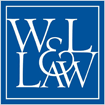Document Type
Article
Publication Title
Frontiers in Research Metrics and Analytics
Publication Date
2022
DOI
https://doi.org/10.3389/frma.2022.981964
Abstract
Property law in the twentieth century moved from the law of things to the law of rights in things. This was a process of fragmentation: Under Hohfeldian property, we conceive of property as a bundle of sticks, and those sticks can be moved to different holders; the right to possess can be separated from the record ownership right, for example. The downside of Hohfeld's model is that physical objects—things—become informationally complicated. Thing-ness constrains the extravagances of Hohfeldian property: although we can split off the right to possess from the right to exclude, use, destroy, copy, manage, repair, and so on, there is a gravitational pull to tie these sticks back into a useful bundle centered on the asset, the thing. Correspondingly, there has been an “informational turn” to property law, looking at the ways in which property law serves to limit property forms to reduce search costs, and to identify and celebrate the informational characteristics of thing-ness. The question of thing-ness came to a head in the context of digital and smart assets with the formation of non-fungible tokens. NFTs were attempts to generate and sell “things,” a conceptually coherent something that can contain a loose bundle of rights. The project was an attempt to re-create thing-ness by an amalgam of cryptography, game theory, and intellectual property. This essay discusses thing-ness in the context of digital assets, how simulated thing-ness differs from physical thing-ness, and the problems that arise from attempts to reify digital assets.
Recommended Citation
Joshua A.T. Fairfield, Property as the Law of Virtual Things, Frontiers in Research Metrics & Analytics, doi.org/10.3389/frma.2022.981964 (2022).

